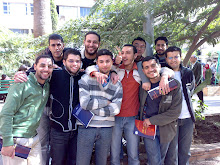
Perhaps the day is so full of things that make you just have time for breakfast, let alone make sure you are eating well the rest of the day. Maybe until the end of your stay at home and lost sleep you need. The fact is that many young people are tired. And with all the requirements of the school and other activities, it is easy to understand why.
For some people, however, it May be another explanation of why they feel exhausted: anemia.
What is anemia?
To understand the anemia, it helps to start with breathing. The oxygen we breathe does not stop in our lungs. It is necessary for our body to nourish the brain and other organs and tissues that allow us to operate. Oxygen travels to these organs by the blood - especially in red blood cells.
Red blood cells or erythrocytes are produced in the body of the bone marrow and act as vessels, transporting oxygen throughout the rivers of blood. Red cells contain hemoglobin (pronounced: hee-Müh-bin-gloss), a protein that is oxygen. To make enough hemoglobin, the body needs to have a lot of iron. We get this iron and other nutrients needed for red blood cells for food.
Anemia occurs when the person has less than normal RBC. This can happen for three main reasons:
1. Red blood cells are being lost.
2. The body is slower than the production of red blood cells should.
3. Red blood cells are destroyed by the body.
Each of these causes is linked to other types of anemia:
Blood loss
When a small amount of blood is lost, the bone marrow can not replace a person without being anemic. But if a large amount of blood lost during a short period of time, what can happen if someone has an accident or injury, for example, bone marrow May not be able to replace red blood cells fairly quickly.
Losing a little blood over a long period of time could also cause anemia. This can occur in girls who have heavy menstrual periods, especially if you do not have enough iron in their diet.
Iron deficiency anemia
Iron deficiency anemia is the most common form of anemia in the United States adolescents. Occurs when the power of a person lacking in iron. Iron deficiency - when the body stores iron reduction - is the first step toward anemia. If the body iron is not replaced at that point, continuing iron deficiency can cause the body to normal production of hemoglobin to decrease. When the hemoglobin level and the production of red blood cells falls below normal, a person is said to anemia. A person suffering from anemia pale in May and May seem to be tired all the time.
There are other reasons why someone nutritional body can not produce enough RBC. Vitamin B12 and folic acid are also needed for red blood cells, it is important to get enough nutrients in their diet. If bone marrow is not functioning properly because of an infection, chronic illness or certain medications like chemotherapy, anemia can develop.
Hemolytic anemia
In a person with hemolytic (pronounced: hee-Müh-LIH-tik) anemia, the normal life of red blood cells is shorter than normal. When cells die prematurely, the bone marrow is unable to keep pace with production. This may occur for a variety of reasons. May a person has a disorder like sickle cell anemia or sphenocytosis. In other cases, the immune system can cause destruction of red blood cells. The antibodies may be formed in response to certain infections or medications that attack the RBCs by mistake.
Why teenagers have anemia?
Given that adolescents go through rapid growth surges, May they be at risk for iron deficiency anemia. During a growth spurt, the body has a greater need for all types of nutrients like iron, we must enter into the food we eat.
After puberty, girls are at increased risk of iron deficiency anemia, which are boys. This is because a girl needs more iron to compensate for the loss of blood during menstruation. Pregnancy can also cause a girl to develop anemia. And a teenager on a weight loss may be much less than iron.
Vegetarians are more at risk of iron deficiency anemia than people who eat meat are. Red meat is the richest and best source of iron absorbed. Although there is little iron in cereals, vegetables and some fruits and beans, there is less of it. And iron in these food sources is not absorbed by the body as easily as the iron in meat.




This comment has been removed by the author.
ReplyDelete